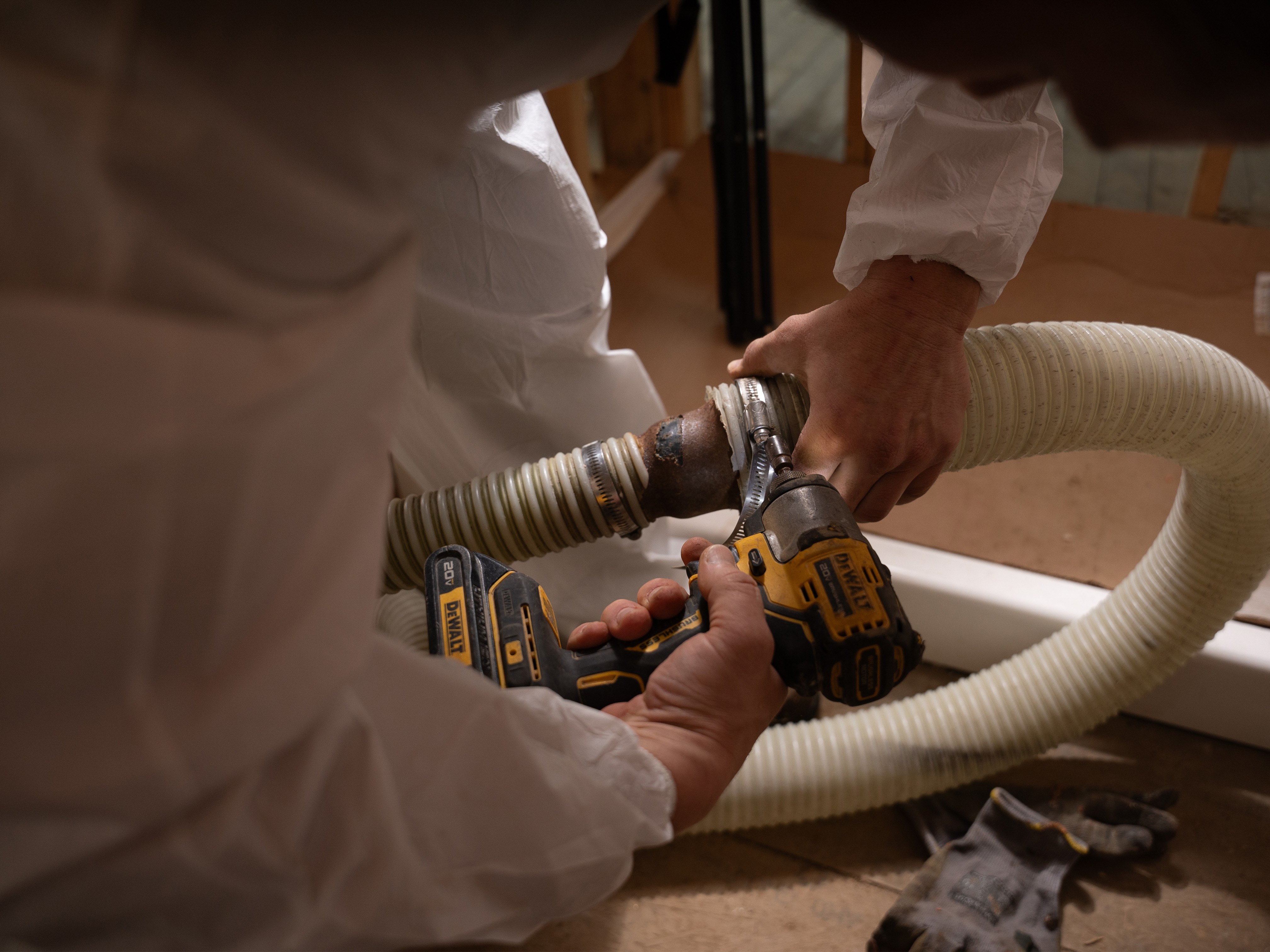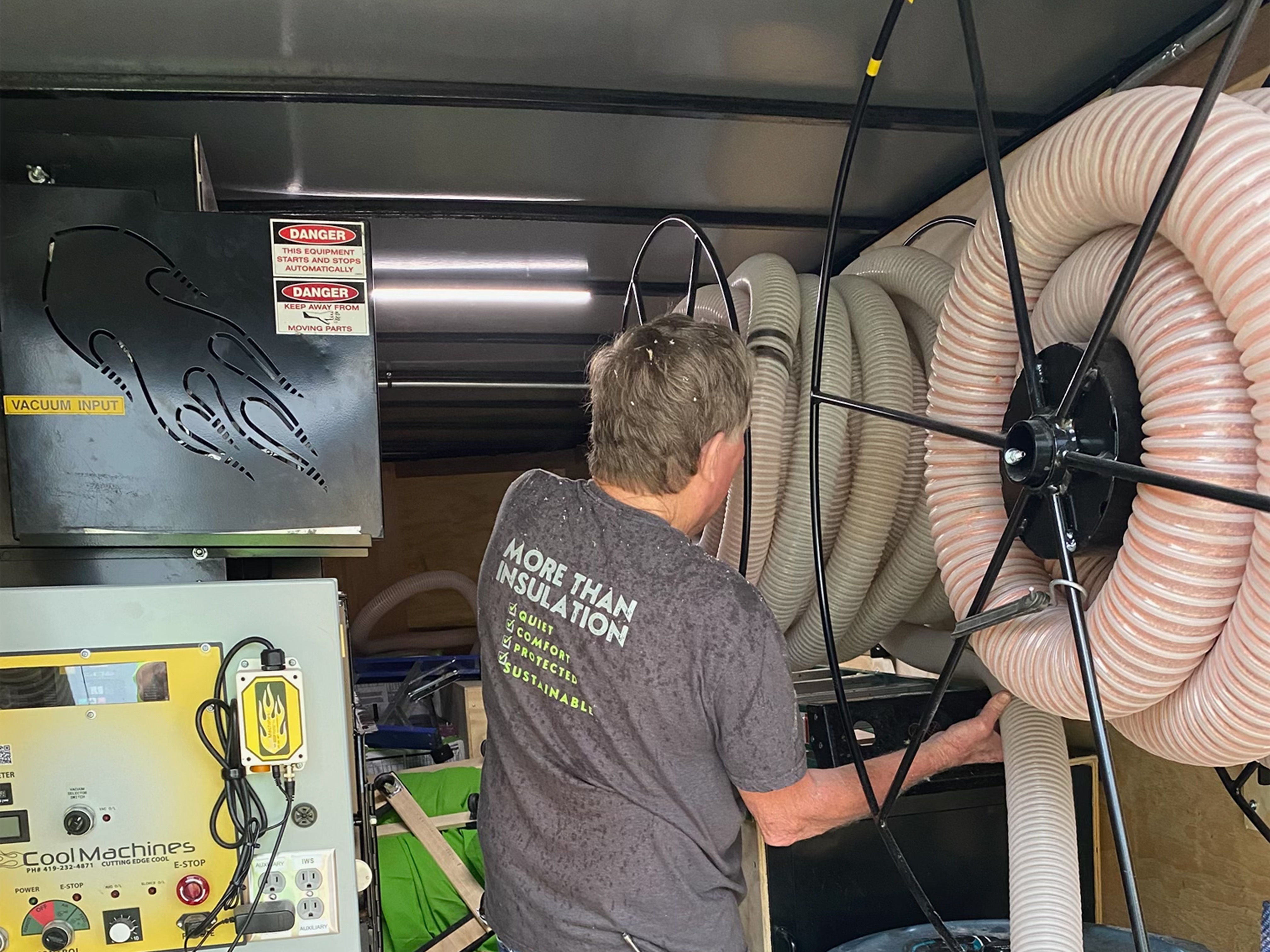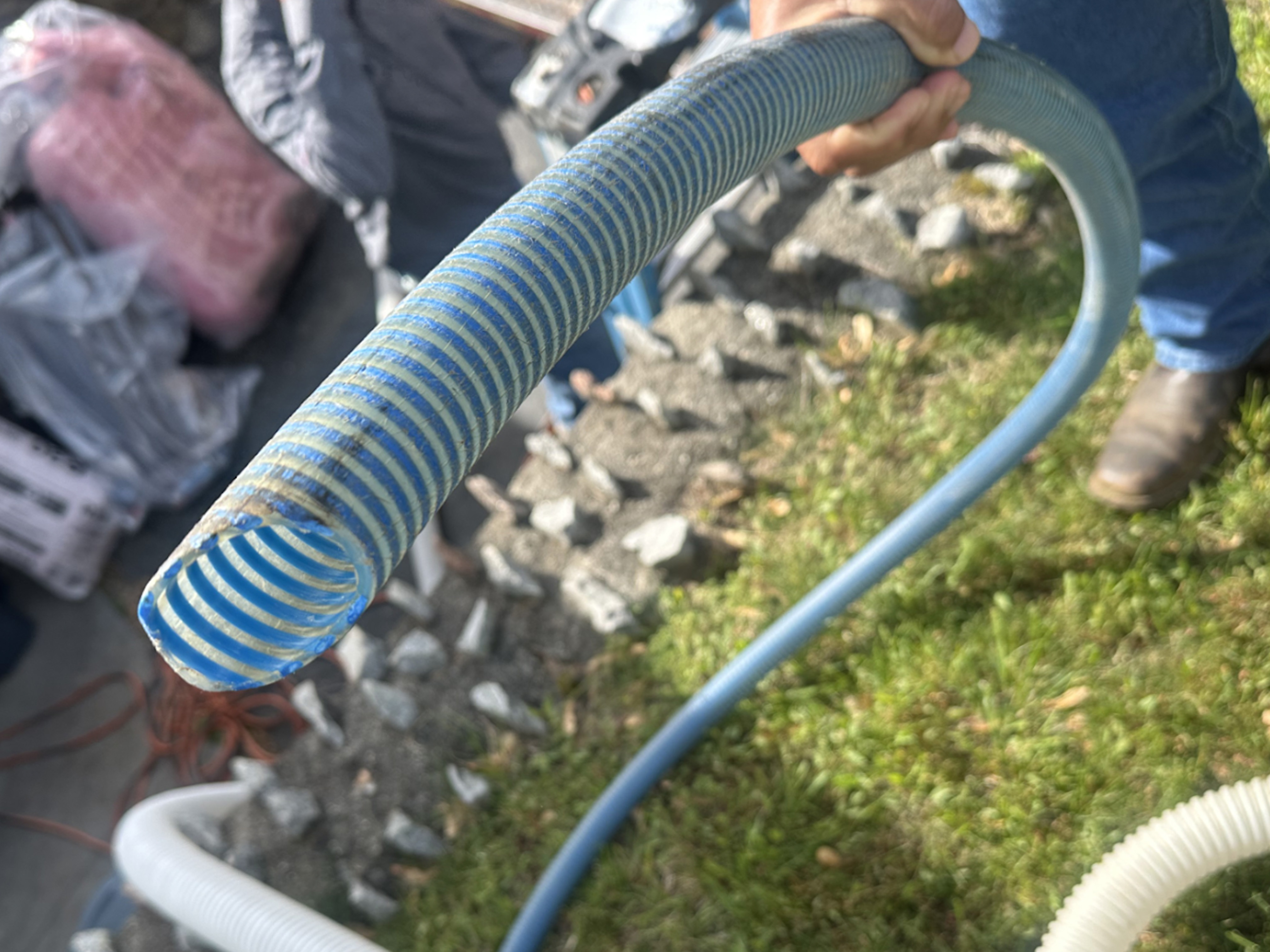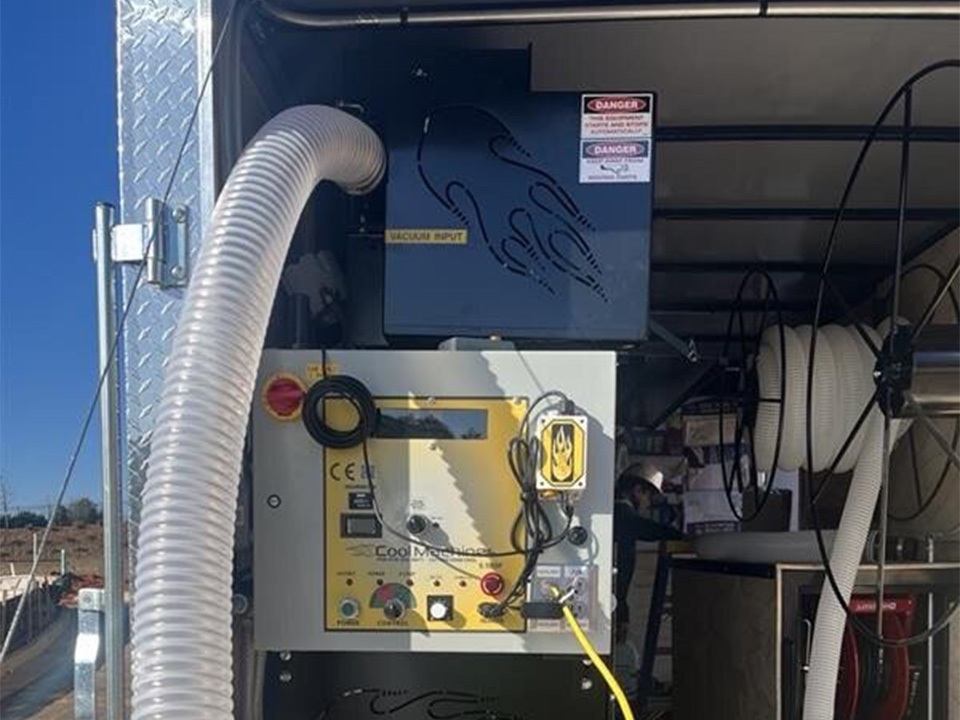
How to Choose Machinery for Optimal Blow-In Cellulose Insulation Installation
When it comes to installing cellulose insulation, the right machine setup can make or break your efficiency, coverage and final results. Whether you’re retrofitting dense-pack sidewalls, blowing loose-fill in attics to improve thermal performance and sound control, or doing specialized spray applications, aligning your equipment with your services is key to a successful installation.
This guide will:
- Help you choose the best cellulose insulation blower machine for your business.
- Show how to optimize equipment you already own.
- Highlight accessories and layout tips to improve jobsite productivity.
- Share machine maintenance best practices to ensure long-term performance.
3 Questions to Ask When Choosing an Insulation Blower Machine
1. What type of installation is needed?
Before choosing or optimizing your insulation equipment, it’s important to match the machine to the insulation application. Different job types demand different machine capabilities, especially when it comes to airflow, pressure and material conditioning.
Loose-Fill: Loose-fill cellulose is blown across open attic floors to reach the target R-value. In these installations, material volume matters more than pressure.
- Look for a machine that conditions (“fluffs”) cellulose effectively.
- Focus on consistent airflow to keep coverage even.
- Prioritize production rate (lbs/hr) and airlock size to determine job speed.
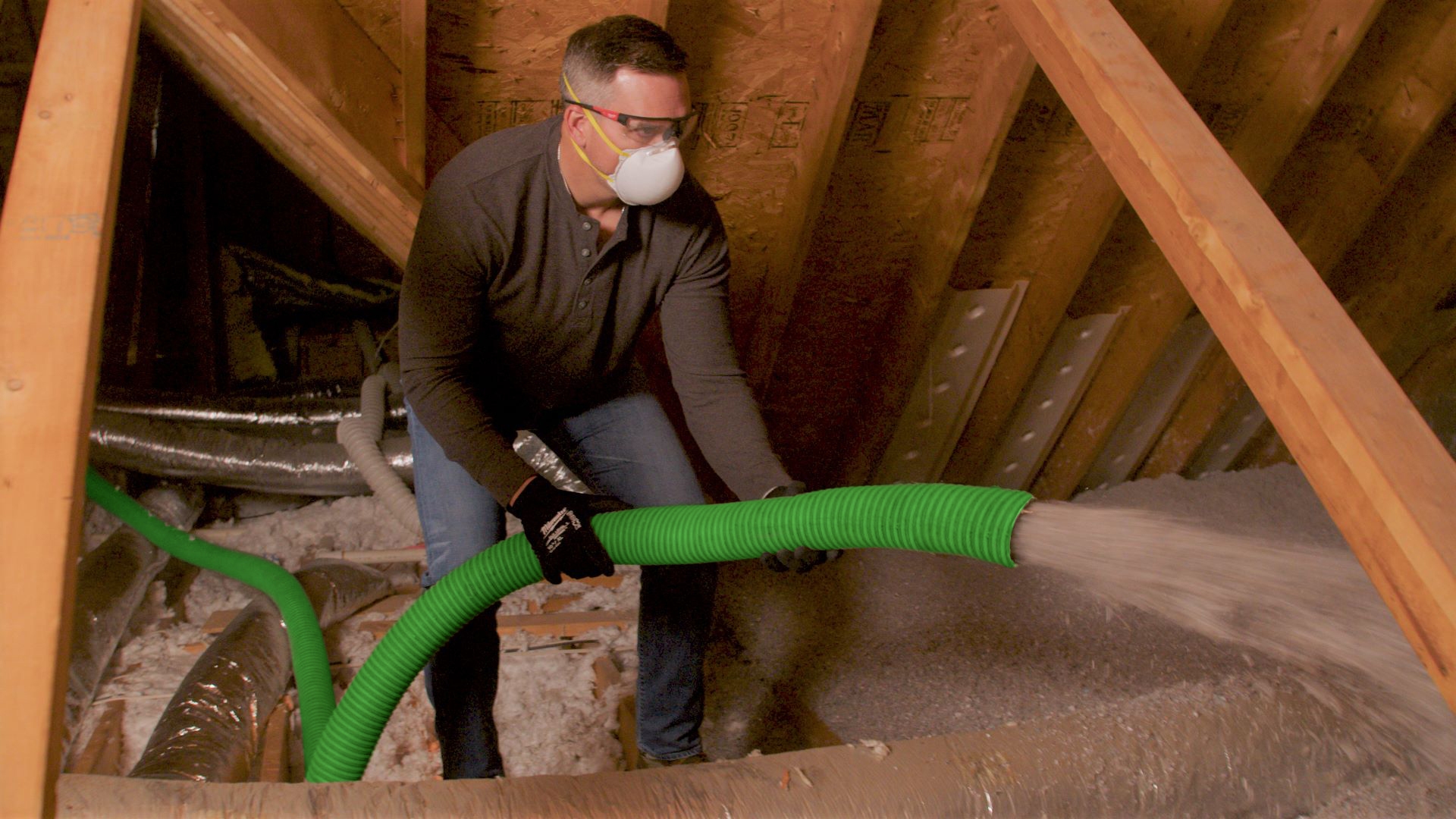
Dense-Pack: Dense-pack applications fill enclosed cavities such as walls, floors, ceilings and even garages. This method needs higher pressure to compact material and prevent settling.
- Dense-pack applications require between 3.0 and 3.5 psi for proper density.
- Longer hose runs or multistory projects demand extra blower power.
- Strong, sealed airlocks are key for handling back pressure.
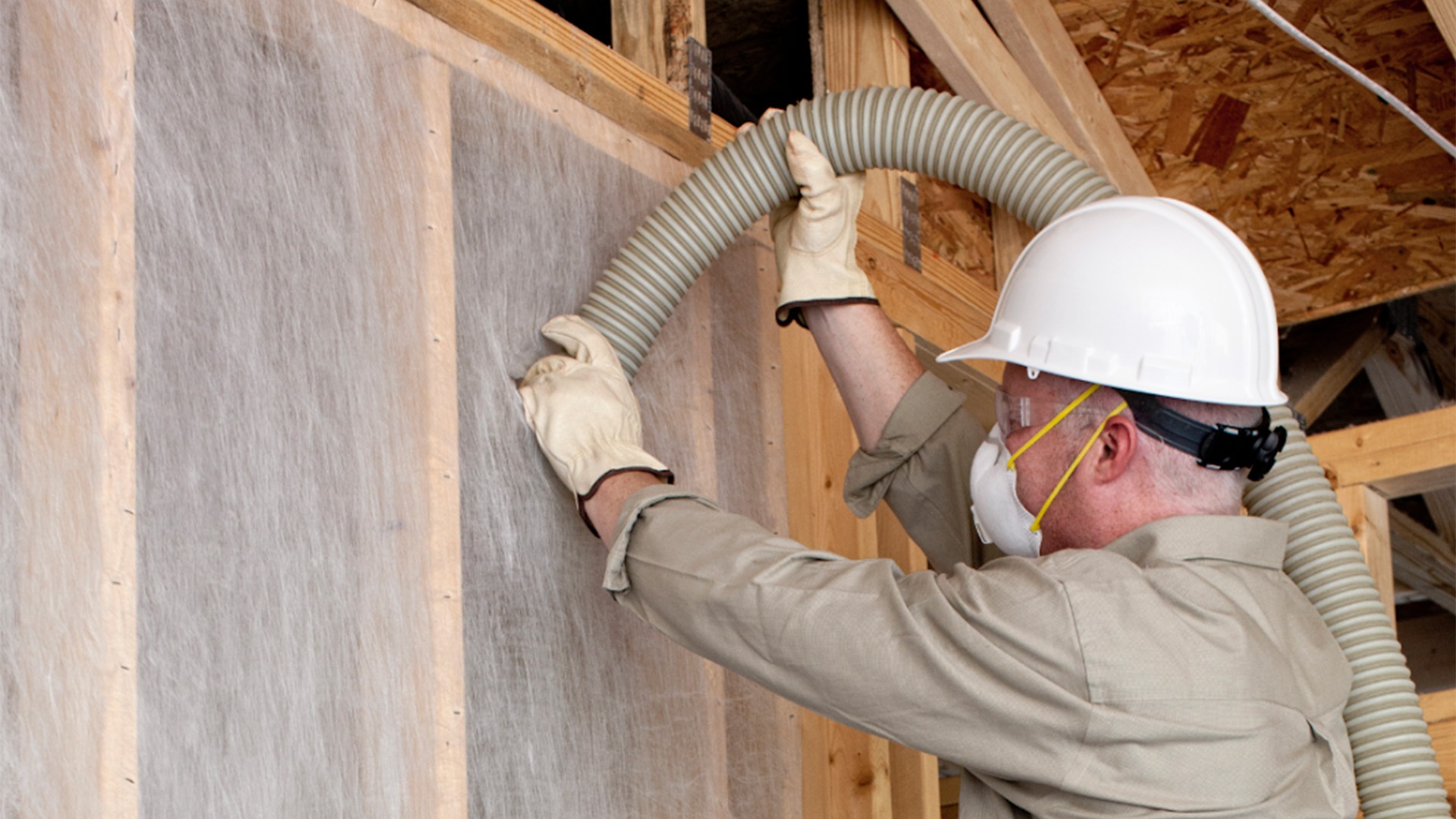
Spray Application (Wall Spray): Spray-applied cellulose is used in new construction to insulate open wall cavities before drywall. It’s one of the most demanding applications.
- A high-pressure blower with an integrated water pump is required for spray-applied cellulose.
- Special spray nozzles are used to lightly mist the cellulose during installation.
- Portability and setup speed are key for large or multi-unit projects, where an integrated two-hopper machine with vacuum system can recycle overspray back into the machine.
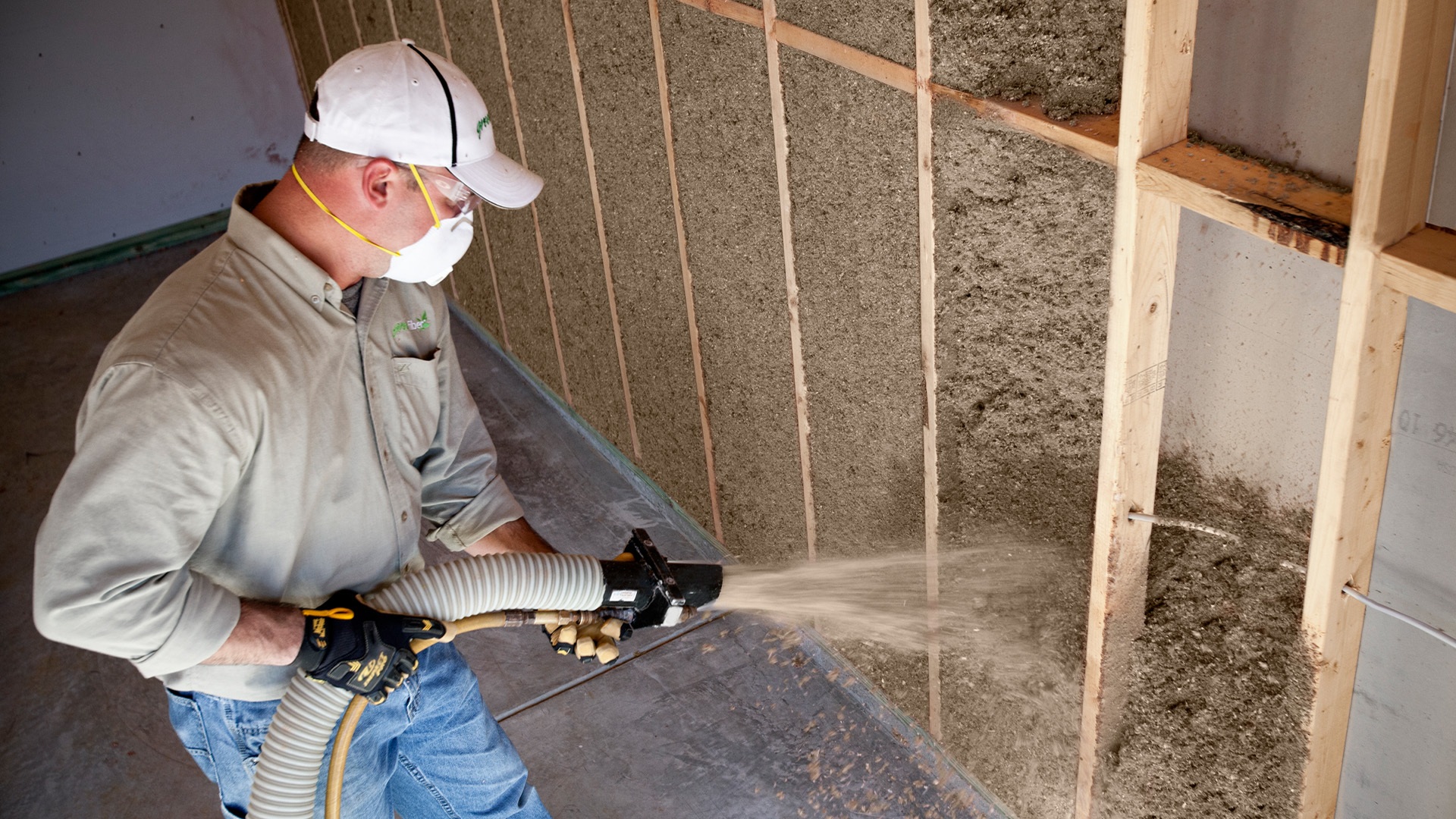
2. What is the scope and frequency of your work?
Blow-in insulation machinery should match the size and frequency of your projects. Production rate, measured in pounds per hour (lbs/hr), is the best metric for finding the right fit. This often corresponds with airlock size and total machine capacity.
Large-Scale, Daily Operations: If insulation is your main business and crews work on large residential or commercial jobs daily, you’ll need a heavy-duty, high-production machine.
- Look for 2,000-plus lbs/hr capacity to maximize speed.
- Aim for a hopper capacity of 15–20+ cu. ft., so crews spend less time stopping to reload.
- Higher production rates deliver better return on investment over time.
Smaller, Occasional Jobs: For remodelers or contractors who offer insulation as a secondary service, portability and cost-effectiveness matter more than maximum output.
- The 1,000–1,500 lbs/hr range is sufficient for retrofits and small additions.
- A hopper capacity of 8–12 cu. ft. is plenty for small jobs and keeps machines lighter.
- Smaller machines are easier to transport and set up.
3. What are the power requirements?
The right power setup ensures your blower operates at full capacity without interruptions. Match your machine to the conditions you see most often.
Standard Jobsites: If power is available, corded machines are an easy option. Many run on:
- 15- to 20-amp household circuits
- 7,500-watt generators (ideal for retrofit work or small crews)
Rural or Off-Grid Sites: No power on-site? Consider:
- A gas or diesel generator (built-in or stand-alone)
- A power take-off (PTO) system mounted to a truck engine
High-Volume or Heavy-Duty Work: Bigger machines may require:
- 120V (30 amp) circuits or 8,000- to 10,000-watt generators
- 240V power or 12-kW generators for maximum output
Pro Tip: Always confirm the generator’s start-up wattage, not just running watts, to prevent underpowering.
For a real-world look at these installation methods in action, and how the right equipment setup can make a big difference on the jobsite, check out this video from Eric Crane. Learn more about his work at Advanced Thermal Concepts.
Match Your Project Needs to the Right Blower Machine
Several manufacturers offer insulation blowing machines designed to meet a wide range of contractor needs, from small projects to large-scale jobs. Explore options from Cool Machines, Krendl, and CertainTeed/Unisul on their product pages. Consider factors such as production rate, hopper capacity, and power requirements, as discussed above, to choose the machine that best fits your business.
- Cool Machines – View products
- Krendl – View products
- CertainTeed/Unisul – View products
Must-Have Accessories for Better Installs and Crew Efficiency
The right blow-in machine accessories don’t just make cellulose insulation installation easier. They also help pros work faster, prevent costly delays and reduce crew fatigue. From hose selection to remote controls, these add-ons can significantly boost jobsite productivity and extend the life of insulation equipment.
Hoses and Hose Reels
Efficient hose management keeps jobsites organized, keeps crews moving and reduces wear and tear on the hoses.
- Hose Reels: Mobile or mounted reels allow for quick setup and teardown.
- Diameter Selection
- Larger hoses are best for loose-fill attic installations.
- Smaller hoses are ideal for dense-pack installations to increase velocity.
- Hose Length: Longer runs increase resistance, which may require more blower pressure.
- Reducers: Use gradual reducers to avoid blockages and maintain consistent flow.
- Ribbed vs. Smooth: Ribbed hoses help “fiberize” the product during installation, improving atomization and delivering a better yield compared to smooth hoses.
- Tubing for Walls
- Flexible tubing works well for retrofits and tight cavity spaces.
- Aluminum tubes perform best in open framing for new builds.
Remotes and Control Systems
Wireless remotes, standard or long range, save time and reduce the need for back-and-forth movement between the machine and the installation location. This can make a big difference on large jobsites.
Water Tanks and Pumps
For spray-applied cellulose, a water tank and pump are essential. Position tanks near the rear of the vehicle for proper balance, and in colder climates, keep them in an insulated compartment to prevent freezing.
Vacuum Systems
Electric or gas-powered vacuums make removal jobs faster and cleaner. Pair them with vacuum savers to protect equipment from damage during debris removal.
Choosing Between Box Truck and Trailer Setup
As your insulation business grows, vehicle setup can be just as important as the machine itself. The right configuration boosts efficiency, increases material capacity and supports long-term growth. When choosing between a box truck or trailer, weigh cost, maneuverability and the type of work you do most often.
Box Trucks
Box trucks offer a fully integrated, professional setup for high-volume insulation crews.
- Pros: Higher payload capacity, better maneuverability in tight urban spaces, dual rear-wheel traction and compatibility with PTO setups.
- Cons: Higher upfront investment and equipment that is not easily detachable from the vehicle.
- Best for: Urban jobsites or contractors with daily installation volume who need a fully contained, ready-to-go setup.
Trailers
Trailers provide flexibility and can be a cost-effective alternative to box trucks.
- Pros: Lower upfront cost, ability to detach when not in use and a tow vehicle that can serve multiple purposes.
- Cons: Harder to maneuver in tight spaces and less stable in poor weather conditions.
- Best for: Rural areas, seasonal or infrequent large installations, or contractors who prefer the flexibility of using different tow vehicles.
Setup Tips
Maximize efficiency by customizing the truck or trailer layout for the workflow.
- Match payload capacity to both insulation type and machine weight.
- Most trailers are 16–24 feet in length with a 7,000-plus-pound payload capacity.
- Add wall mounts, hose reels, lighting and insulated storage to streamline workflow.
How to Convert the Insulation Blower Machine You Already Own
If you already own a fiberglass blowing machine, you may not need to buy an entirely new setup for cellulose insulation. Many airlock-style machines, such as the Volu-Matic® 500 or the Krendl 2800, can be adapted for loose-fill, dense-pack or even spray-applied cellulose.
In many cases, it’s simply a matter of adjusting the machine’s gate and blower settings or adding the right accessories.
Most Insulation Blower Machines Can Be Adapted
Airlock systems are particularly versatile because they regulate material flow and can handle the back pressure required for dense-pack applications. For questions about adapting your equipment, consult your Greenfiber regional sales representative for expert guidance. You can also reference our Machine Conversion Guide, a quick guide to optimizing your machine for Greenfiber installs.
Minimum Requirements for Spray-In Conversions: Spray-applied cellulose is more demanding than loose-fill or dense-pack. If you’re converting an existing fiberglass blower for spray work, make sure it meets these minimum specs:
- Four-plus bag hopper capacity for continuous production
- Airlock system to control material feed and maintain consistent density
- Integrated or attachable recycling function to reuse overspray material in wall applications
Key Equipment Accessories for Spray-In Work
- For attic spray applications:
- 125- to 250-gallon water tank (should be insulated and heated)
- Pump
- Spray nozzle
- For wall spray applications:
- Water tank and pump
- Two-jet wall nozzle with spray tips
- Wall scrubber
- Built-in or stand-alone vacuum system
Best Practices for Maintaining Insulation Blower Machines for Optimal Performance
Keep insulation blower machines running smoothly and extend their lifespan with these essential maintenance tips.
Replace Worn Airlock Seals and Clean Agitators Regularly
- Worn seals cause air leaks, reducing blower pressure and leading to inconsistent material feed. Most manufacturers recommend replacing seals about every six months, or at least once a year with lighter use.
- Regularly clear agitators of insulation buildup or debris to maintain proper fluffing capability and prevent overheating.
- These steps restore air pressure, ensure smooth material flow and keep your machine running efficiently.
Use Reducers to Control Flow and Pressure
- Gradual step-down hose reducers increase material velocity, which is critical for dense-pack installs.
- Avoid sudden size changes to prevent clogging and maintain consistent material flow.
Density Checking by Bag Count Volume
- Calculate Installed Weight: Track the number of bags used and adjust for the insulation left in the hopper at the start and finish.
- Measure Cavity Volume: Subtract framing from total square footage to determine the exact volume.
- Determine Density: Divide total installed weight by cavity volume to get pounds per cubic foot (pcf).
- Check by Assembly: Perform calculations for each wall, floor or ceiling separately to ensure consistent application.
- Document Volumes: Record cavity volumes for every assembly. On projects with repeating layouts (e.g., multifamily housing), standardized calculations can save time.
Set Your Crew Up for Success on Every Install
Choosing and maintaining the right insulation blower machine is essential for maximizing productivity, safety and profitability on every project. Small adjustments to equipment and setup can make a big difference in install quality and crew efficiency.
If you’re unsure which machine or accessories are best for your business, or need guidance on optimizing existing equipment, Greenfiber’s sales representatives are ready to help. Reach out for personalized, expert advice to ensure your insulation installations perform their best every time.
Contact your Greenfiber® sales representative today for assistance with insulation machine selection and optimization.
Frequently Asked Questions
Can I use one insulation blower machine for multiple installation types?
Yes, many insulation blower machines are versatile enough to handle multiple applications, including loose-fill attics, dense-pack walls and spray-in installations. The key is having adjustable gate and blower settings, which allow you to switch from the low pressure needed for loose-fill to the higher pressure required for dense-pack.
What are the signs my insulation blower machine needs to be upgraded or serviced?
A few common red flags include:
- Drop in output pressure or inconsistent feed — this is often linked to worn airlock seals
- Frequent clogging or jams in the hose or machine
- Incompatibility with modern cellulose products or inability to reach dense-pack densities (approximately 3.5 lb/ft³)
- Mechanical wear, including aging motors, worn agitators or paddles, or cracked/damaged hoppers — all of which can lead to inconsistent material feed and coverage issues
If your machine can’t support new insulation installation types (such as spray-in), it may be more cost-effective to upgrade rather than accessorize.
How do I know if I need a truck or trailer setup for my insulation business?
Think about job frequency, location and payload needs:
- Daily High-Volume Installs: A box truck with PTO is often more efficient, offering better maneuverability and integrated tool storage.
- Occasional or Rural Jobs: A trailer can be more budget-friendly and versatile, especially if you need to detach and use your tow vehicle for other purposes.
Can I reuse a fiberglass blower machine for cellulose insulation?
In many cases, yes, especially if you have an airlock-style model (e.g., Unisul/CertainTeed Volumatic 5 or Krendl 2800). You’ll just need to adjust settings for proper material flow and pressure, particularly for dense-pack.
- Category: Installation

